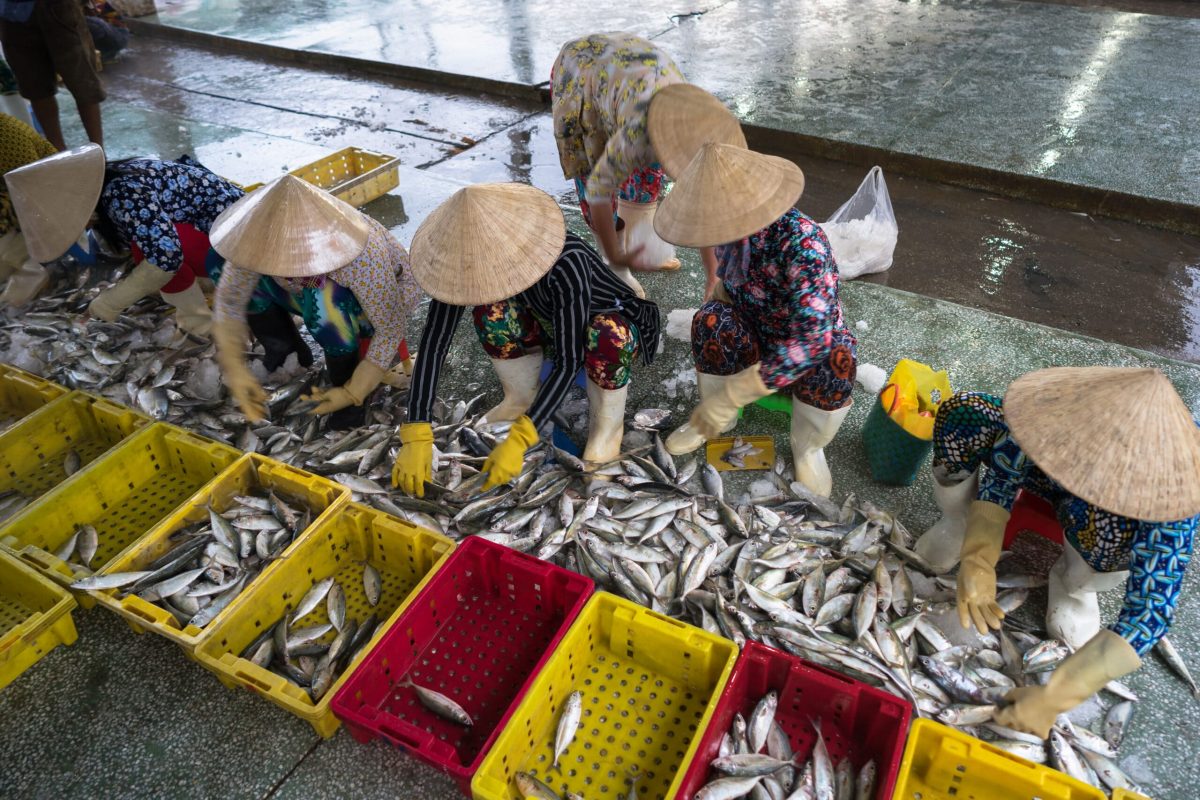Article 3 in Our “Tipping the Scales: Climate Considerations for the Seafood Lover” Series
Ocean health is inextricably linked to human wellbeing, both economic and physical. When we are making decisions about the seafood we want to consume, we cannot ignore the implications these products have for our fellow human beings. For thousands of years, communities around the world have relied upon the ocean for sustenance. Today, more than 3 billion people depend on seafood as a vital protein source. In fact, seafood is the largest traded global food commodity. An estimated 800 million people work in the fishing labor force, highlighting the magnitude of its influence on economic welfare. In coastal communities, our ocean also provides essential protection from storms, as well as resources for the development of pharmaceuticals, cosmetics and a range of other goods we all utilize, in addition to the seafood we consume.
Human Rights in Seafood
Seafood’s environmental footprint is often difficult to track and supply chains can be quite challenging to trace. Yet, regardless of which sushi roll or oysters we are buying, humans have been involved in nearly every step of the process, from cultivation to transport to preparation.
Sometimes, people are involved in far less than desirable circumstances. Human rights abuses have been prevalent in the fishing industry both in aquaculture and wild capture, where exploitation, forced labor, human trafficking and modern slavery have been documented extensively around the world. In turn, environmental factors can further exacerbate human rights violations in the seafood industry as lower fish stocks force vessels to travel further distances and take longer trips away from land-based law enforcement and the public eye. Pressure on operators is also increasing to meet demand, which can lead to cut corners on health and safety concerns. Many organizations and consumers are pushing for greater transparency and a much-needed end to these abusive practices.
Issues of Scale
Ocean degradation is accelerating as our global population continues growing. With an estimated 9.7 billion humans expected to be living on Earth by 2050, we anticipate that climate change will necessitate mass migrations as environments become too extreme to support communities, including fishing communities, as they exist today. Added pressure to feed a growing population will compound the impacts that we know climate change is already having on oceans and marine life. This will likely mean increased pressure on terrestrial systems for food sources, increased deforestation and biodiversity loss. A September 2019 report published by the Intergovernmental Panel on Climate Change predicts that the sustainable fish catch could drop by as much as a quarter by the end of the century if emissions continue to rise on their current trajectory, and we know that one third of the ocean’s fish stocks are already fished at “biologically unsustainable levels,” according to the FAO.
It is also worth noting that climate change will certainly yield economic impacts on worldwide fishing industries. We can expect the aforementioned shifts in migration and fish populations to lay bare on the fishing industry (and its laborers) across the world, made visible through instability in supply, shifts in seasonality and insecurity around quality control in warmer climates. Concerns around scarcity, food access, nutrition and serious threats to sensitive marine ecosystems come into play and must be seriously considered when reimagining and reconstructing our flawed food system.
A Deeper Dive
When considering the most ethical and sustainable seafood choices for ourselves, we cannot disregard the socioeconomic impacts, both positive and negative, inherent to our seafood system. We know that the most severe impacts of climate change will pose dangerous threats to the poorest populations, making decisions around seafood also matters of climate justice. We must support this movement by using discretion with our purchases. Asking questions about where our seafood came from, researching the practices of our go-to brands and seeking out certifications like Best Aquaculture Practices and Fair Trade Certified are practices we can all adopt to support ethically-sound seafood.
Some of the best ways to guide our socially-responsible seafood decisions are through continued education about these socioeconomic implications. To make informed decisions around the human ramifications of our seafood decisions, the resources below can provide further insights into this dynamic and critically important area.
- Why social responsibility matters, published by Seafish, provides a further overview on why we must address seafood’s social landscape.
- Social Responsibility in the Global Seafood Industry, a comprehensive guide by Fishwise developed in 2016.
- Expanding social responsibility in fisheries, a page developed by Stanford’s School of Earth, Energy and Environmental Science.
- Social risks in aquaculture, a scientific paper published by the Food and Agriculture Organization of the United Nations (FAO).
